Delhi reels under twin emergencies: Air pollution & COVID-19

Air pollution is a critical risk factor for COVID-19 infections and mortality, according to several research studies.
The current condition in India’s capital city is now adding more credibility to that finding.
For the past two weeks, residents of Delhi are facing a serious health crisis as high levels of pollution are exacerbating the coronavirus pandemic.
Delhi typically experiences “striking spikes in air pollution” in the late-fall and early-winter period, although the deterioration of air quality this year is particularly concerning. High levels of air pollution can be attributed to stubble burning in neighboring regions, local sources of pollution, and unfavorable meteorological conditions.
With the onset of winter this year, air pollution reached a new record as the air quality in Delhi remained in the 'severe' category for almost 6 days in a row from November 4 to November 9, according to Central Pollution Control Board (CPCB) data. This is a depressing reversal, as the Delhi residents were able to breathe clean air for most of the year because a stringent lockdown brought industries and traffic to a grinding halt.
On Nov. 14, Delhi’s Air Quality Index (AQI) was recorded as 414 — the worst AQI in the city since 2016 on Diwali and was well beyond the ‘emergency’ threshold.
PM2.5 - The silent killer
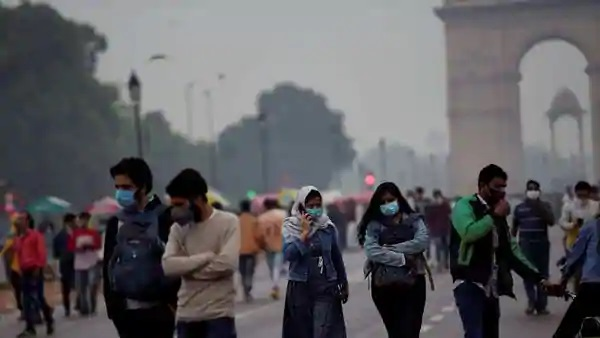
Particulate Matter (2.5) has become the lead pollutant this winter. These are particles that are about 3% the diameter of a human hair. They are extraordinarily damaging because their small size allows them to bypass our natural defense mechanisms, enter our bloodstream via the lungs, and circulate throughout the entire body, leaving a trail of damage behind.
“The current level of air pollution in Delhi is particularly dangerous because of the presence of tiny particulate matter referred to as PM 2.5.”
-Vijay Limaye, Climate change and Health science Fellow, Natural Resources Defense Council
The peak levels of pollution in Delhi early November far surpass the WHO’s standards for PM 2.5 levels. On Nov. 3, the level of PM 2.5 was more than 23 times higher than the WHO air quality guidelines, according to data from the Indian Central Pollution Control Board.
A study by researchers at the Harvard School of Public Health showed that an increase of only one microgram per cubic meter in PM 2.5 is associated with an eight percent increase in the COVID-19 death rate.
Given that ratio, the impact of worsening air pollution on COVID rates and mortality are expected to worsen dramatically in the coming weeks.
COVID-19 & Air pollution
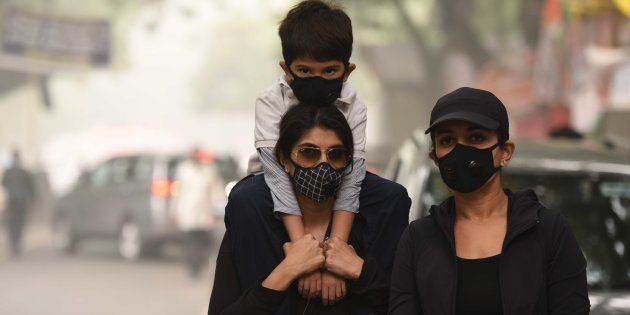
The city seemed to have pulled through the pandemic last month when daily infections had fallen to around 2,500. Quarantine centers were lying empty and hospital beds were easily available. The worst seemed over.
However, with the easing of lockdown restrictions, virus figures have skyrocketed again, similar to the experience in Europe and the United States.
With the sudden spike in air pollution since September, the COVID-19 infections also saw a steep incline with 4,473 cases on September 16 – the biggest daily jump in Delhi till then.
In the month of October, the rate of infections nearly doubled in Delhi, and daily cases crossed the 5,000-mark for two consecutive days — 28 October (5,673) and 29 October (5,739). During the same period, Delhi’s testing numbers, though, remained more or less static.
The national capital witnessed a sudden spike in Coronavirus cases since October 28, when the daily rise breached the 5,000-mark for the first time and crossed the 8,000-mark on November 11. This was the period when Delhi had consecutive “bad air days”.
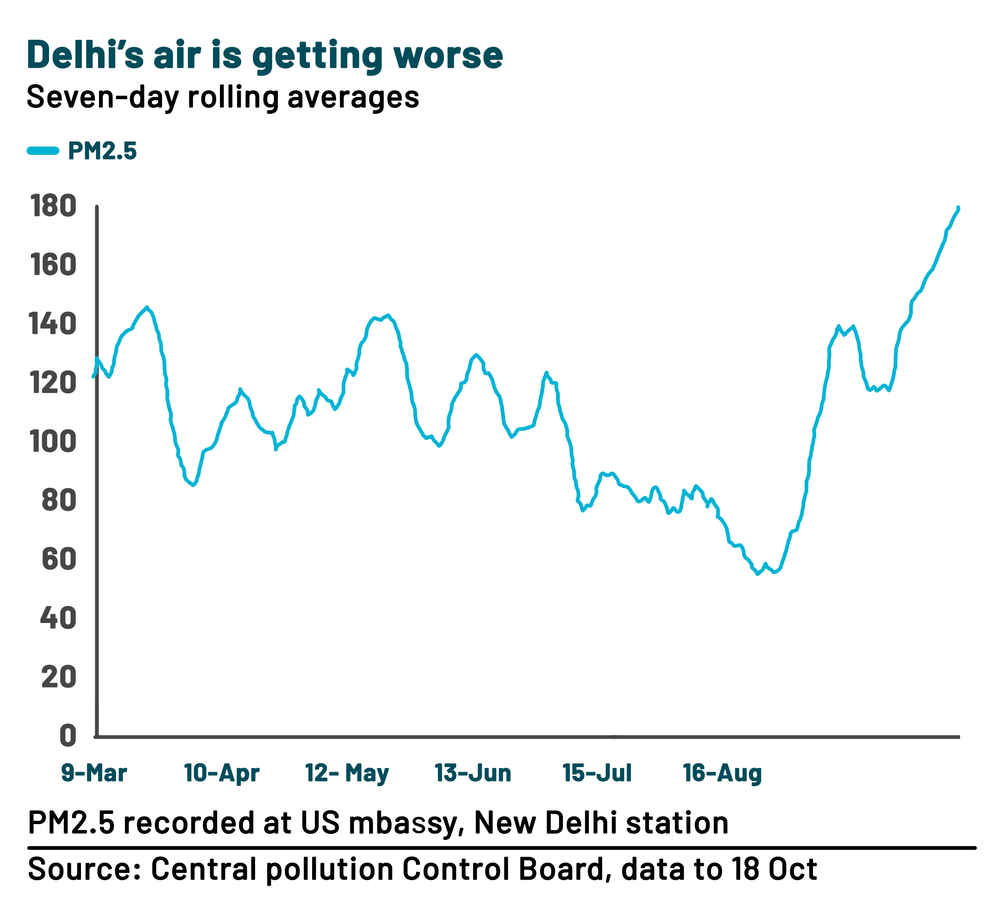
This period also saw an increase in COVID mortality. Prior to its “bad air days”, Delhi’s fatality rate was dropping drastically but with the worsening of air quality, the mortality rate also saw a steep incline, with daily mortality going up to 109 in November – the highest in 5 months.
This period also saw an increase in COVID mortality. Prior to its “bad air days”, Delhi’s fatality rate was dropping drastically but with the worsening of air quality, the mortality rate also saw a steep incline, with daily mortality going up to 109 in November – the highest in 5 months.
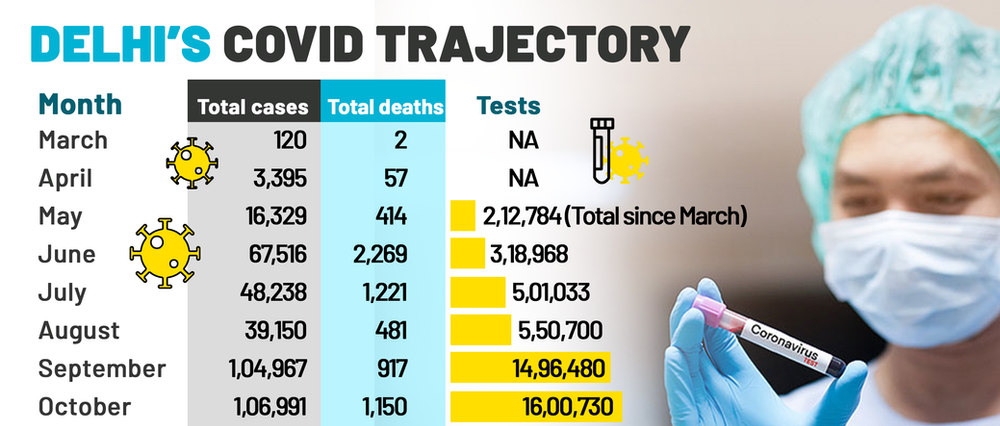
These COVID-19 Infections as well as the mortality rate can easily be correlated to the recent air pollution.
Researchers at the Harvard T.H. Chan School of Public Health have already established the link between air pollution and COVID-19 mortality.
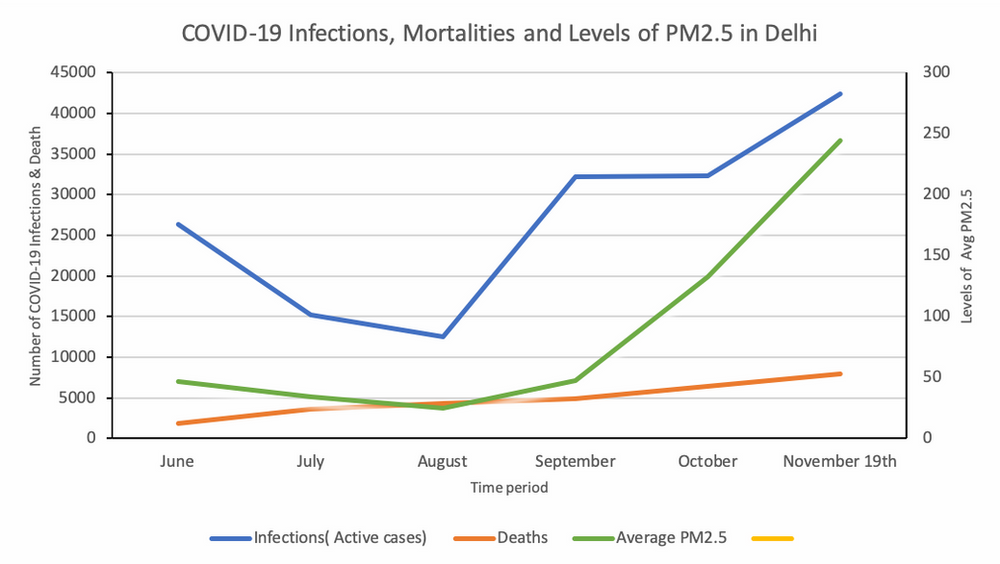
They found that long-term exposure to PM2.5 is associated with worsened severity of COVID-19 infection symptoms and an increased risk of death. Researchers from the Netherlands and the University of Seinna have confirmed similar findings.
Scientists postulate that long-term exposure to chronically high PM2.5 and PM10 levels weakens the ability of the lungs to fend off infections, therefore making people more susceptible to diseases like COVID-19.
In addition, studies from ,University of Bologna, Italy have shown that traces of SARS-CoV-2 RNA, the genetic material of the virus, can be found on pollution particles, meaning that increased air pollution may act as a vehicle to increase COVID-19 transmission in highly polluted places.
As a vaccine for the pandemic is predicted to reach the common public only after few more months at the very least, factors like air quality play a prominent role in the country’s ability to handle the pandemic.
Have you read?
- Work in a factory? Understand how Pure Skies can help you
- ,,Air pollution is a risk factor for COVID-19 mortality
- How can clean air help you cut costs after the lockdown?
Pure Skies to the rescue
In times like these, the need for a state-of-the-art technology to control both indoor as well as outdoor air pollution is of prime importance. With its large coverage area as well as low maintenance, technological solutions such as Pure Skies from Devic Earth can certainly help reduce air pollution.

.svg)
.webp?width=1080&height=1080&name=Free%20Case%20Study%20Steel%20Plant%20(1).webp)







Post Comments